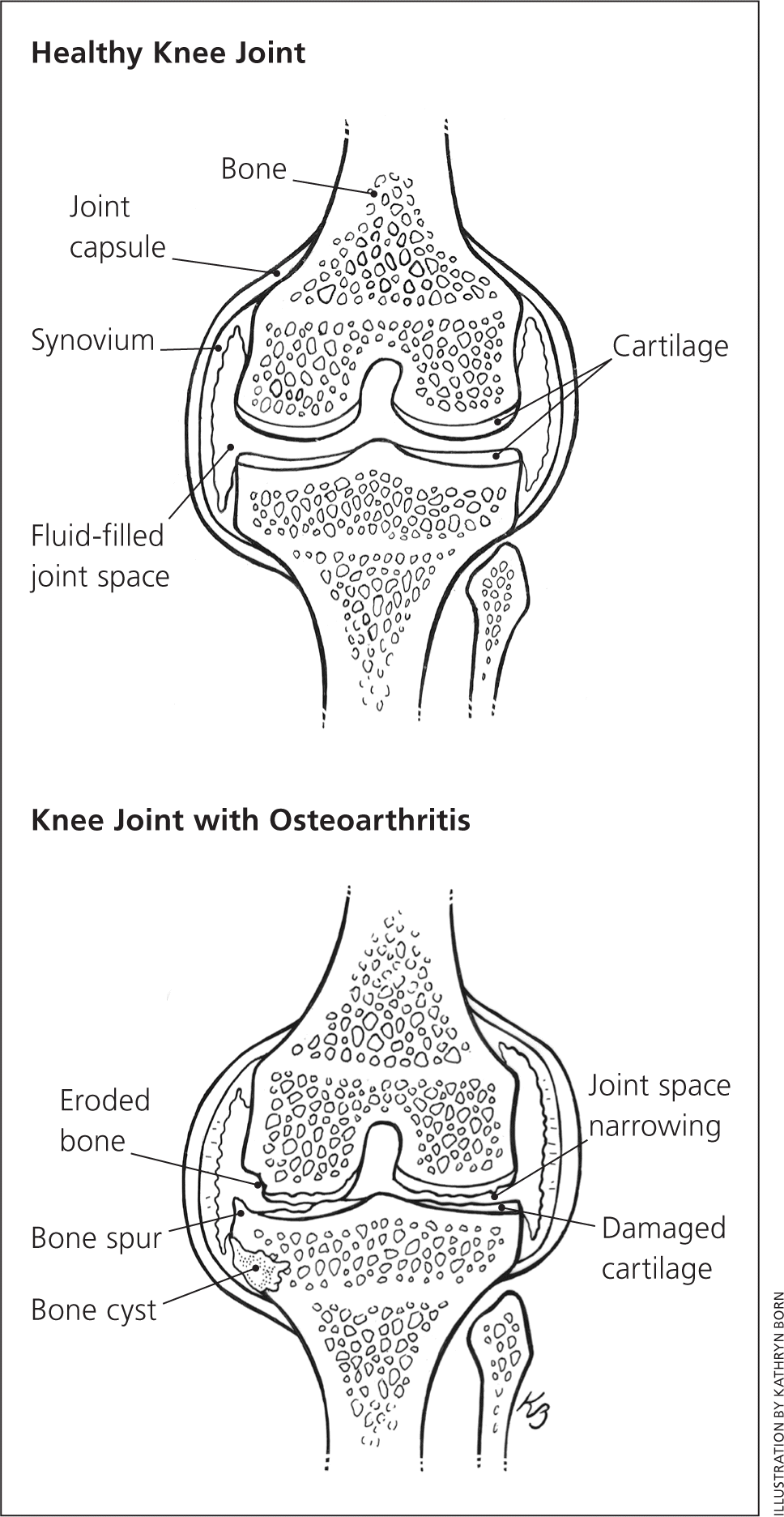
Am Fam Physician. 2012;85(1):57-58
See related article on osteoarthritis.
What is osteoarthritis?
Osteoarthritis is the most common joint disease. It is caused by a breakdown of the cartilage in the joint (see picture). It is more common in older people, women, overweight people, and people with family members who have osteoarthritis.

What are the symptoms?
The most common symptom is joint pain. It is usually in the hands, feet, hips, knees, or spine. In the hand, it often affects the joint at the base of the thumb. In the foot, it is usually at the base of the big toe. The pain can be worse after periods of rest, like when you first get up in the morning or when you get up out of a chair.
Osteoarthritis can also limit movement because it causes pain and stiffness. It can make it difficult to do everyday activities like walking on a flat surface or opening a jar.
How is it treated?
Osteoarthritis can be treated with medicines, supplements, exercise, weight loss, and sometimes surgery. Surgery is usually saved for people with symptoms that do not get better with other treatments.
What kinds of medicine will help?
The first medicine your doctor may recommend is acetaminophen (one brand: Tylenol). It is inexpensive and is safe when used in the correct dose. Most adults with osteoarthritis should take 650 to 1,000 mg four times per day for at least two weeks before trying other medicines. If acetaminophen does not help, your doctor may suggest a nonsteroidal anti-inflammatory drug like ibuprofen (one brand: Motrin). Some of these medicines are available over the counter, but others may need a prescription. Be sure to follow your doctor’s directions carefully when taking any medicine, and tell him or her if you have any side effects.
Your doctor may suggest a shot of medicine called a corticosteroid. The shot goes directly into your joint to help the pain. This is known as a cortisone shot. There also is a medicine called hyaluronic acid that can be given as a shot. This may give longer pain relief, but is much more expensive.
The dietary supplements glucosamine and chondroitin may help some patients with osteoarthritis when they are taken together. There are many different over-the-counter combinations of these two supplements.
Do exercise and weight loss help?
Exercise can help you get back some of the motion you may have lost. The best kind is low-impact aerobic exercise like riding a bike or swimming. If you are overweight, you should try to lose weight. Losing weight takes some pressure off of joints and can lessen pain and stiffness.
Will I need surgery?
If other treatments do not help, you may need surgery to replace the joint. This is called a total joint replacement. Most people have excellent relief of pain after this surgery. Artificial joints can last for 15 to 20 years. Your doctor will talk to you if surgery could help your osteoarthritis.
Where can I get more information?
AAFP’s Patient Education Resource
Arthritis Foundation
Web site: http://www.arthritis.org
